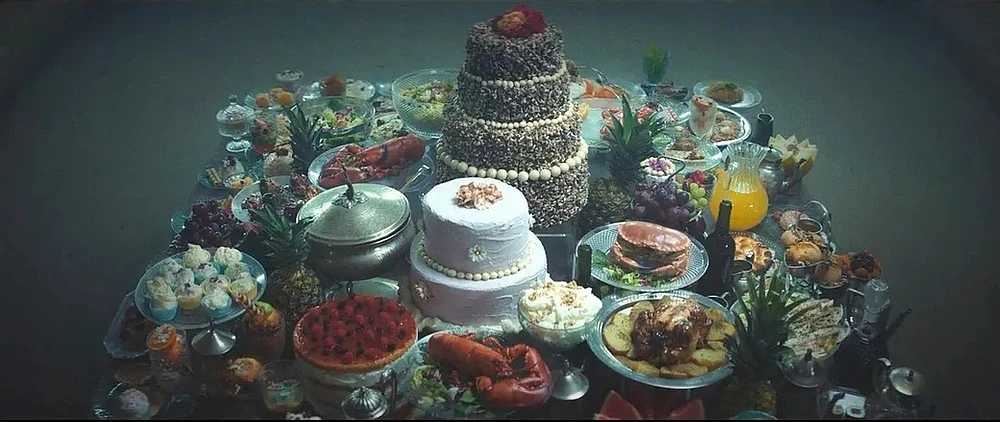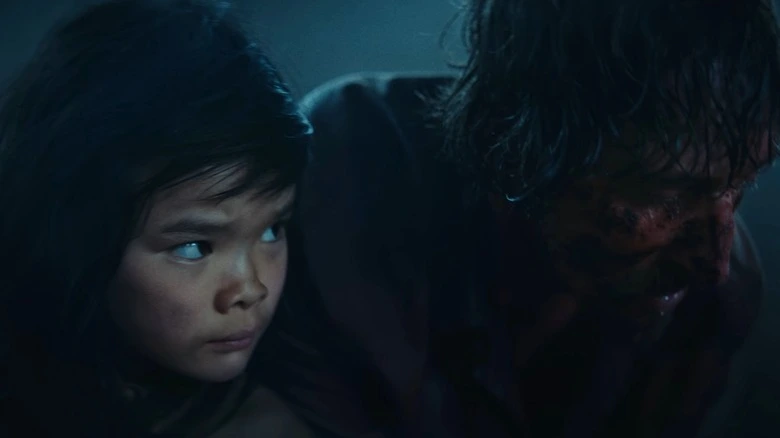Ever wondered what would happen if society’s class struggle were turned into a vertical nightmare? The Platform takes that concept and drops it, literally, floor by floor, with a side of social commentary and psychological horror. It’s the kind of movie that sticks in your brain for long and not just because of its wild visuals.
The film doesn’t spoon-feed you answers. Instead, it serves up an ending that’s cryptic, open to debate, and thick with symbolism. Some call it a masterpiece of metaphor, others are still scratching their heads, wondering what really happened there.
Whether you’re here for philosophy or just need someone to explain that final scene, you’ve landed in the right place. We’re breaking down The Platform ending in all its gritty, layered glory.
⚠️Spoiler Alert! If you haven’t yet reached the ending of The Platform, go watch it and then come back (because you will need to!) This article contains major spoilers that might ruin the movie’s twisted surprises—unless you’re into that kind of chaos.
A Prison, A Platform, and A Whole Lot of Panna Cotta

Alright, imagine that you are trapped inside this utterly insane, tall prison structure, and food is basically a jackpot and also has something to do with what level you are on. The film, The Platform, is all about your floor levels, and believe me when I say this, the lower your level is, the more absolutely crazy things tend to get. And I mean, seriously, they go really crazy!
This Spanish sci-fi horror film is a crazy ride that combines some downright disturbing visuals with a keen examination of how society functions (or doesn’t). It’s not only the gross stuff that will linger with you, it’s the way the story slowly reveals to you what people are actually like and how screwed up the entire system is.
But let’s get to the fun stuff, that final part. What about the kid, why is that platform still rising, and what is the point of all that panna cotta dessert anyway? Time to explore The Platform ending and attempt to work out what it is all really saying!
Also, read Sinners Ending Explained: Vampires, Blues, and One Hell of a Sacrifice
The Descent Begins: Delivering a Message or Dying Trying!
After enduring months in The Pit, Goreng teams up with Baharat, a fellow inmate with something rare in this place, hope. Together, they come up with a wild plan, protect one untouched dish (a perfect panna cotta), and send it back up the platform. They believe it will shock the administrators into realizing just how broken the system is.
Armed with weapons and idealism, the duo rides the platform down. But this isn’t a joyride, every floor becomes a battlefield. As they pass the lower levels, the desperation turns feral. They fight, bleed, and starve their way down.
They eventually realize the panna cotta might not be the real message. That’s when things take a sharp turn.
A Child in the Dark: The Unexpected Twist

At what seems like the bottom of the Pit, they find something shocking, it is a young girl. She’s silent, fragile, and most notably, alive. Many believed there were no children in The Platform, but here she is, hidden away like a secret the system didn’t want you to know.
Suddenly, the panna cotta seems trivial. This child becomes the true symbol of innocence and injustice. Baharat and Goreng decide she’s the real message that needs to be sent up, something the system can’t ignore.
Death, Sacrifice, and the Ascent to Nowhere
Baharat is fatally wounded. Goreng, battered and hallucinating, climbs onto the platform with the child. As they ascend, we’re expecting a grand confrontation with the people in charge.
Except, there isn’t one.
They reach the top, but there are no administrators to greet them. No alarms, no dramatic reactions. Just eerie, sterile silence. At some point, Goreng steps off the platform, leaving the child to ascend alone.
Then the platform rises further, beyond what we see. Cue end credits and endless debate.
Also, read As Above, So Below Ending Explained: What The Hell Just Happened?
So, What Does The Platform Movie Ending Mean?
Let’s break down the possibilities :
1. The Child is the Message
This is the most widely accepted theory. Unlike the panna cotta, the girl is human, innocent, and impossible to ignore. She represents the ultimate plea for compassion. Sending her up is an emotional and moral gut punch that the system should acknowledge.
2. Goreng’s Sacrifice
Some say Goreng steps off the platform because he knows he isn’t worthy to be the messenger. He’s killed, eaten human flesh, and lost his grip on reality. The child, untouched by the cruelty of the system, is the only “pure” being who can carry the message.
3. The System is Broken, Period!
Here’s the darker take: nothing changes. The administrators don’t react. They might not even exist. Maybe this entire structure runs on a blind routine. If that’s the case, The Platform movie ending is a brutal reminder that moral messages might fall on deaf ears when the system is corrupt.
4. The Ending = Ambiguity
Maybe there is no answer! The film isn’t trying to tell us what happens, it just wants us to ask the questions. Who are the administrators? Did the message get through? Is change even possible? The ambiguity forces viewers to think critically about hierarchy, inequality, and complicity.
Themes in The Platform Ending: It’s All a Metaphor

At its core, The Platform is a savage critique of class structure, privilege, and survival. The higher you are, the less you care about who’s below. Sounds familiar?
The ending continues on that theme. The girl is hope, purity, and rebellion. Goreng is every person who wakes up and tries to fight back. The Pit is the society. Grim, huh?
But don’t lose heart. While the movie drips with despair, the act of sending the girl up suggests that even in the bleakest systems, resistance is possible and, above all, extremely necessary.
Also, read Nocturnal Animals Ending Explained: A Haunting Tale of Revenge or Regret
Final Thoughts: The Platform’s Punch to the Gut
The Platform ending messes with your head. It doesn’t give you all the answers, and that’s totally on purpose. It’s like the movie is poking you, making you wonder where you actually fit into the whole picture and whether you are sharing the little that you have or just hoarding everything for yourself?
It’s one of those movies that stays with you, gets you thinking, and it’s almost genius how much it says without spelling everything out. Who needs everything explained when you’re talking about a revolution, right?
So, seriously, what were your thoughts? Did that girl make it to the top? Was Goreng a ghost the whole time? Or was this whole crazy thing just a really messed-up commercial for a super tall multi-level parking?
Go ahead, let’s hear your thoughts, ideas, and your ethical dilemmas in the comments. Don’t hold back, the crazier, the better!
Frequently Asked Questions
1. What does the child symbolize in The Platform movie ending?
The child is widely interpreted as the “pure” message, something untainted by the system’s cruelty and greed. Unlike the untouched panna cotta, which was a more abstract symbol, the child represents innocence and undeniable humanity.
2. Did Goreng die at the end of The Platform?
That is something up for debate. When Goreng steps off the platform after delivering the girl, it’s ambiguous. Some believe it symbolizes his death or spiritual ending, while others think that it marks the completion of his mission.